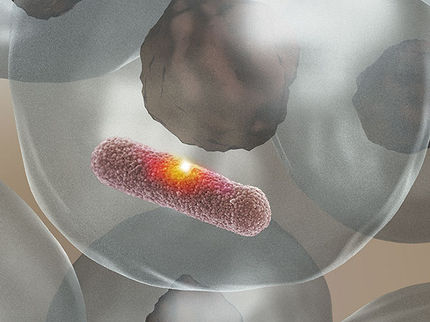Structure of antibiotic ramoplanin reveals promising mechanism
Advertisement
With the "last resort" antibiotic vancomycin now plagued by the first signs of bacterial resistance, a scientific collaboration centered at Duke University has identified how a candidate successor antibiotic known as Ramoplanin A2 can kill pathogenic bacteria by interrupting how they form their cell membranes.
During a 12-year quest, the research team had to learn how to crystallize Ramoplanin's molecular structure at the crucial time and place that it interacts with the bacterium's membrane. They had difficulty doing this with real bacterial membranes, so they had to devise a stand-in from a detergent molecule possessing membrane-like characteristics.
"I am excited that we were able to solve the structure, which was not trivial," said Dewey McCafferty, a Duke professor of chemistry and biochemistry. "Now we have this really important picture of how Ramoplanin works as an antibiotic. Ramoplanin is important because it has the ability to kill certain bacteria resistant to front line antibiotics such as Vancomycin and Methicillin."
"Knowing more about its molecular underpinnings is going to allow us to make changes to the antibiotic structure in order to improve its pharmacological properties."
A report on the work, with McCafferty's post-doctoral research associate James Hamburger as first author, will be published online in the Proceedings of the National Academy of Sciences. The research was funded by the National Institutes of Health.
According to McCafferty, whose Duke group studies the chemistry of bacterial infections and resistance, Ramoplanin A2 is an experimental commercial version of an antibiotic first isolated from a soil bacterium in the 1980s and experimentally shown to work against problem pathogens such as Staphylococcus aureus, Enterococcus faecium, Staphylococcus epidermis and Clostridium difficile.
It arrives at a time when Vancomycin, the antibiotic physicians rely on when others prove ineffective, is beginning to confront genetically resistant bacterial strains after three decades on the market. Despite its promise, various Ramoplanin preparations have not been well-tolerated in human trials due to poor absorption and limited toxicity. However, an oral preparation intended to treat Clostridium difficile , which causes serious and hard-to-combat intestinal infections, has recently been under clinical investigation. Progress has also been hampered by uncertainty about how Ramoplanin works on bacteria, a question McCafferty has been pursuing since 1997. Researchers knew that Ramoplanin interrupts the assembly of the bacterial cell wall, but did not know the molecular details.
After overcoming the difficulties of depicting Ramoplanin's interaction with the cell membrane, the researchers discovered that the molecule forms U-shaped structures that can bind to and capture a specific intermediate in membrane formation called Lipid II. Thus bound, the Lipid IIs can no longer participate in membrane formation. And because of this, bacteria with improperly formed cell walls die.
Vancomycin also interrupts cell wall synthesis by capturing Lipid II, but in a different way and position in the molecular architecture, McCafferty said. The first antibiotic, penicillin, targets related enzymes called transpeptidases that stitch Lipid II molecules together into the mature cell wall. Bacteria routinely develop immunities to antibiotics by mutating into new versions that work around such structural Achilles' heels.
For now at least, "Ramoplanin is not susceptible to the same mechanisms of resistance as Vancomycin, because it acts by a different molecular mechanism," McCafferty said.




























































